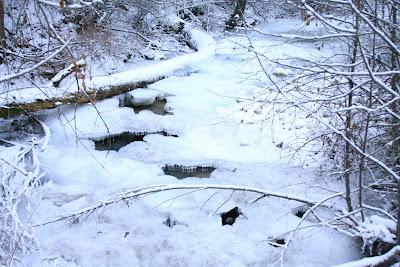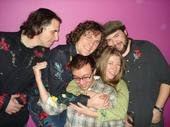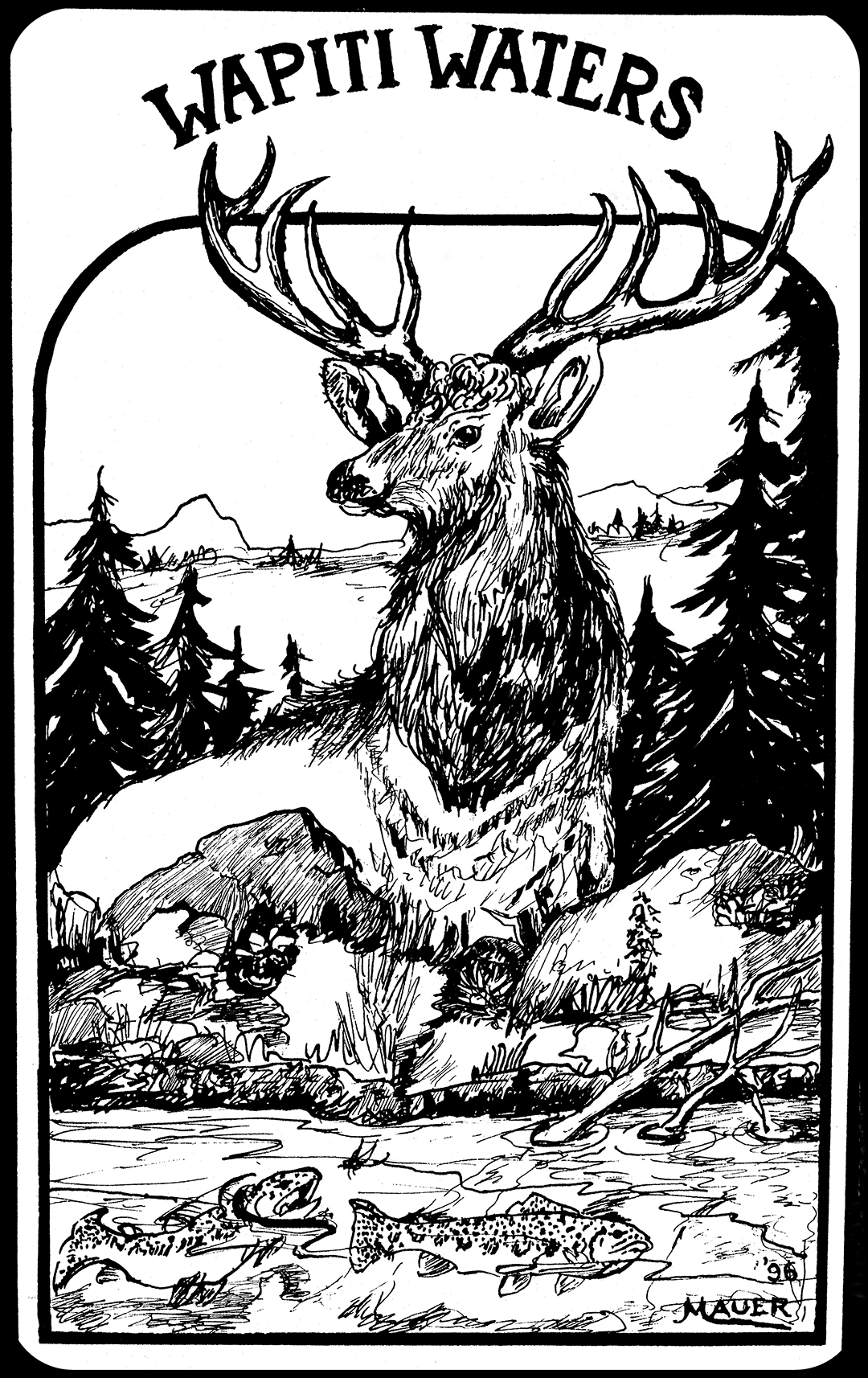
by Merle Ann Loman | Feb 20, 2009 | Conservation/benefits/organizations

Saturday, March 7, 2009
DoubleTree Hotel, Missoula
Please send Registration Form by February 25 to:
FOAM Annual Meeting
PO Box 67
Gallatin Gateway, MT 59730
ANNUAL MEMBERSHIP MEETING
Saturday, March 7, 2009
DoubleTree Hotel, Missoula
FOAM invites you to the DoubleTree Hotel in Missoula on Saturday, March 7 from 8:30 a.m. to 4 p.m. for discussions, lunch, our traditional raffle, and drinks.
Ten rooms are available @ $109 double occupancy if you reserve before February 20.
Call Rachel at 406-542-4654 and refer to FOAM when making reservations. PLEASE CALL IMMEDIATELY if you want to reserve a room for the night.
Agenda
8:30 – 9:00 Register, get coffee, find friends, swap stories
9:00 -10:30 RRAFT Blackfoot Mgt. Proposal – Charlie Sperry, Chet Crowser, Jack Mauer
10:30 -12:00 B’foot & Madison SRP Process, Fees, Expenses, Local spending – Molly Wainwright, Gerry Walker
Noon Buffet Lunch
1:00 – 2:00 Stacy Juelfs, Payne Financial Group, on FOAM insurance costs, coverage, benefits
2:00 – 3:00 Wayne Johnston, Board of Outfitters on operations plans, guide advertising, agents, and more
3:00 – 4:00 FOAM updates, Q&A from members for directors
4:00 – ? Raffle, hors d’oeuvres, drinks
For the raffle, we’ve got Simms, Patagonia, and Northwest River Supply gear scheduled to appear, other items from local and national flyfishing gear manufacturers, plus gift certificates from local eateries and such.
Are you a Montana guide and want to know more about FOAM? Visit the site at http://www.foam-montana.org/index.php or contact the FOAM Director, Robin Cunningham, at 406.763.5436 or foaminfo@foam-montana.org.

by Merle Ann Loman | Dec 23, 2008 | Conservation/benefits/organizations, iiii Winter/Snow
Click the photo for a larger view in a new window.

This is my attempt to provide a little more information about trout behavior (Part I); and ice development and anchor ice (Part II). In my research, I found only few studies, and I am pleased to reference for Part I a study that was done here in the Bitterroot.
I ran this article by Chris Clancy, our local Montana Fish, Wildlife and Parks fisheries biologist and one of the authors of the Bitterroot study. His input:
I think the take home message is that some sort of overhead cover and a variety of habitats are helpful to trout in the winter. Streams that are simplified by overgrazing or channelization lose the diversity of habitats. Deep pools are particularly important. I expect the winter movement is not really something they want to do but more likely they have to as the location they are in has changed or somehow become inadequate for their needs, so they find another. Generally in a healthy stream, the mortality during winter is much higher than summer.
Part I – Trout
Trout obviously prefer to expend as little energy as possible in the winter. In the study referenced in this section, bull trout and cutthroat trout made extensive downstream overwintering movements with declining temperature in the fall, yet for the remainder of the study (until late February), most fish remained stationary. Some fish made additional downstream movements in winter during a low-temperature period marked by anchor ice formation. Winter movement was more extensive in the mid elevation stream where frequent freezing and thawing led to variable surface ice cover and frequent supercooling. Habitat use of both species varied with availability; beaver ponds and pools with large woody debris were preferred in one stream, and pools with boulders were preferred in the other. Trout overwintered in beaver ponds in large, mixed aggregations. Both species decreased use of submerged cover following the formation of surface ice.
Their results indicate that (1) continued activity by trout during winter is common in streams with dynamic ice conditions and (2) complex mixes of habitat are needed to provide suitable fall and winter habitat for these species.
My note: It is my understanding the “complex mixes of habitat” produce more static ice conditions and are most often streams with natural vegetation and “undisturbed” i.e. not altered by man (mostly construction) or overgrazing. Open streams, where there is little or no cover and vegetation, produce more dynamic ice conditions. Other studies suggest that even though trout may be in streams with dynamic ice conditions, their preference is for more static or stable conditions – where thermal cover might help keep the surface ice from freezing and thawing.
References for Part I
THE ROLE OF STREAM ICE ON FALL AND WINTER MOVEMENTS AND HABITAT USE BY BULL TROUT AND CUTTHROAT TROUT IN MONTANA HEADWATER STREAMS, Jacober, M. J., McMahon, T. E., Thurow, R. F., Clancy, C. G., Abstract, Page 1 Click here for their paper published by the American Fisheries Society 1998
Part II – Ice
Traditionally, habitat variables have been related to stream flow distribution, structure, cover, temperature, and water quality. Winter and ice formation will influence these variables.
As winter approaches and temperatures lower, the water cools. As it reaches the freezing point, border ice begins to form along the river margins and around obstacles and skim or surface ice forms in low flow velocity areas.
In low gradient areas static ice formation occurs and surface ice is established. Due to increased resistance by the ice, water depth increases and velocities are reduced. In low gradient rivers and river reaches static ice formation occurs enabling stable conditions. Surface ice decreases the amount of light and creates cover against predation and severe hydraulic conditions allowing fish in these areas to preserve energy more efficiently.
Ice production in small, steep rivers is dominated by dynamic ice formation with potential melting and freezing throughout the entire winter. In high gradient sections, such as rapids and riffles, dynamic ice formation dominates. Dynamic ice formation starts when water temperature drops below zero degrees. Here, the water temperature becomes super cooled and tiny ice crystals form, known as frazil ice, or floating ice plates (ice that forms as small plates drifting in rapidly flowing water where it is too turbulent for pack ice to form). In locations with sufficient turbulence, frazil ice is transported towards the riverbed where it adheres and forms anchor ice. Normally, anchor ice formation develops during night and pauses during day.
Anchor ice formation can be extensive and may cover large areas. It may be distinguished between two types according to its formation process: Type I: less dense and forming on top of the substrata and Type II: Dense and forming between the substrata, filling all the small openings and spaces. During the events of anchor ice formation, flow conditions may be substantially altered. Type II anchor ice will potentially exclude important fish habitat. Fish may experience entrapment or be forced to relocate into other suitable areas, preferably surface ice covered stream margins.
In small, steep rivers, extensive growth of anchor ice may occur and lead to the formation of anchor ice dams. These anchor ice dams are normally developed in transition zones between riffle and pool sections and in locations with emergent, large boulders, and can slow further surface ice growth. High mortality of trout has been observed during the formation and breakup of anchor ice dams due to stranding, ice collapse, and physical abrasion from suspended ice particles.
References for Part II
ANCHOR ICE FORMATION AND HABITAT CHOICE OF ATLANTIC SALMON (SALMO SALAR L.)PARR IN STEEP STREAMS, Stickler, M. (M.Sc.), submitted to the Norwegian University of Science and Technology – Click here for the online paper
ICE IN THE ENVIRONMENT, Stickler, M., click here for the online paper

by Merle Ann Loman | Dec 18, 2008 | Bitterroot, iiii Winter/Snow

Bear Creek is on the west side of the Bitteroot Valley near Victor. This week temperatures were about zero during the day and minus 16 during the night. We have plenty of water from the previous rains and now it is turning to ice. It is beautiful, but where are all the fish to go?
Click here to read a paper titled Role of Stream Ice on Fall and Winter Movements and Habitat Use by Bull Trout and Cutthroat Trout in Montana Headwater Streams.
An excerpt from the Conclusion: Complex mixes of habitat are needed to maintain suitable fall and winter habitat for stream resident bull trout and westslope cutthroat trout populations. Beaver ponds, deep pools, and submerged cover of large woody debris (LWD), boulders, and undercut banks are important components of this mix. Bull trout appear particularly susceptible to loss of habitat complexity. In the Bitterroot River drainage, bull trout are rare in watersheds with a high degree of disturbance (Clancy 1993) and without LWD or pools (Rich 1996). Shallow, wide streams not only lack suitable winter cover, but also promote subsurface ice formation (Chisholm et al. 1987; Brown et al. 1994). In degraded areas, activities that moderate fluctuations in winter stream temperature (i.e., riparian vegetation restoration) and that create deep water habitats (i.e., beaver reintroduction) may help alleviate poor winter habitat conditions.
It is a scientific paper, a dry read, but if you are interested in trout habitat, you will find it very informative, yet there is still much to learn about ice and trout survival.

After I created this post, I remembered a photo I had taken on Sweathouse Creek in November. This is from the property that butts against Forest Service near the trailhead for Sweathouse Creek.
There is a county bridge (actually culverts topped with road gravel) across Sweathouse right here. These people just bought the chunk of land that is on both sides of the creek. They can access all of their land by the county bridge, but they wanted their own bridge. They got permission to build it. In the process, they are reaming out an area of the creek where they will are building a winding road and footings and a bridge.
You are seeing some of the woody debris and plant material that they have removed. I find it horrific that they did this. After reading the paper above, I am more disturbed about it. Just my opinion.

by Merle Ann Loman | Oct 20, 2008 | Friends

Above is a photo of Nate. Nate is originally from Missoula, Montana and is now in New York City in a band called New Heathens.
About the New Heathens! They have a great sound, you can check it out on their website http://www.newheathens.com/. Some of the reviews call them American Roots Rock or Rootsy Rock and Roll. I think their sound is more complex than that! Tell us what you think…
 Members: Nate Schweber, Singer, Guitar, Harmonica; Butch Phelps, Guitar; Dominic Tiziano, Guitar; Eric Seftel, Drums; Brandy Wood, Bass
Members: Nate Schweber, Singer, Guitar, Harmonica; Butch Phelps, Guitar; Dominic Tiziano, Guitar; Eric Seftel, Drums; Brandy Wood, Bass
Genre: Rock n Roll Hometown: New York City
You can see by this slide show that Nate still spends time in Montana and fishing. We have quite a bit in common, including a love of music!
A Note from Nate: Thanks for digging the band. I’m working on trying to come up with the songs and, more importantly, money to finish a second record. We’re working with a producer named Eric “Roscoe” Ambel who played with Steve Earle and produced a bunch of cool bands that I dig including the Bottle Rockets and the Yayhoos. Making records is almost as expensive a hobby as flyfishing.
I tried my luck on Connecticut’s Housatonic River this past weekend. Beautiful fall colors. I hooked one brown trout on a nymph but lost him. Fish were rising all around but I couldn’t get them to take anything I was offering. I tried big nymphs, little nymphs, big dries, little dries, streamers and everything in between. Nothin’. To be honest, it reminded me of a few times I’ve fished the Bitterroot when the same thing has happened: fish rising everywhere, but not to any of my flies.
Well, Nate, we know what you mean. The fishing in western Montana this fall is amazing. The days are calm and beautiful; the water is like glass. That means the fishing is technical and even though the fish are rising, it takes a lot of effort to find out which of our flies and what size they will be interested in. At least you have targets to throw to. When you do hook up, though, the rewards are fantastic!

by Merle Ann Loman | Oct 6, 2008 | Bitterroot
Click on photo to see larger version in a new window.

 As our new friend, Nate, says, “Hot Damn!” The fishing was amazing today. I met Jack on the Bitterroot about noon. IT FISHED ALL DAY!
As our new friend, Nate, says, “Hot Damn!” The fishing was amazing today. I met Jack on the Bitterroot about noon. IT FISHED ALL DAY!

When we got on the river, the trico spinner fall lasted about 3 hours. It seemed every cutthroat and rainbow in the river were up. You had targets to cast to, too many. Using a fly with flatter wings and 5x tippet, it was difficult to see/follow your fly. We had some challenging places to put the fly so it would float drag free. We shot for fish hanging right on the seam — you needed to put the fly right in their mouth, as Jack said, “force feed them.” They didn’t know what fly to eat, but if they took yours, you had better lift the rod carefully, keep the tip high, and let them run for a while. Wow, it was fun. Needless to say, my finesse was lacking and I learned some lessons in line management and tension while I broke some nice fish off.
Late afternoon they seemed to switch to Blue Winged Olives and we could get away with a slightly bigger upright winged fly. You still needed to cast a long distance. When you raise the rod smoothly on a take, be ready to let them run. We were still on a small, 6x tippet. It was great practice for me as I learned to bring in the bigger fish.
When I post the slide show (later today), you will see amazing fall colors and reflections along with a deer crossing the river and a grebe (duck) diving.
For now, I will post a photo trying to show the trico spinner fall and a couple of fish.

Not a bad day. Start with office work at home, meet on the river at noon, get out by 6:00. Jack attends a Fish, Wildlife, and Parks RRAFT board meeting while I do some chores with my daughters in Missoula. Get home and run through the football game we taped. Life is good.



 Members: Nate Schweber, Singer, Guitar, Harmonica; Butch Phelps, Guitar; Dominic Tiziano, Guitar; Eric Seftel, Drums; Brandy Wood, Bass
Members: Nate Schweber, Singer, Guitar, Harmonica; Butch Phelps, Guitar; Dominic Tiziano, Guitar; Eric Seftel, Drums; Brandy Wood, Bass
